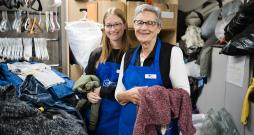Addressing the emotional pain of war
Families in Ukraine are better equipped to deal with the trauma of war as MCC partners provide safe spaces and outlets for expressing their emotions.
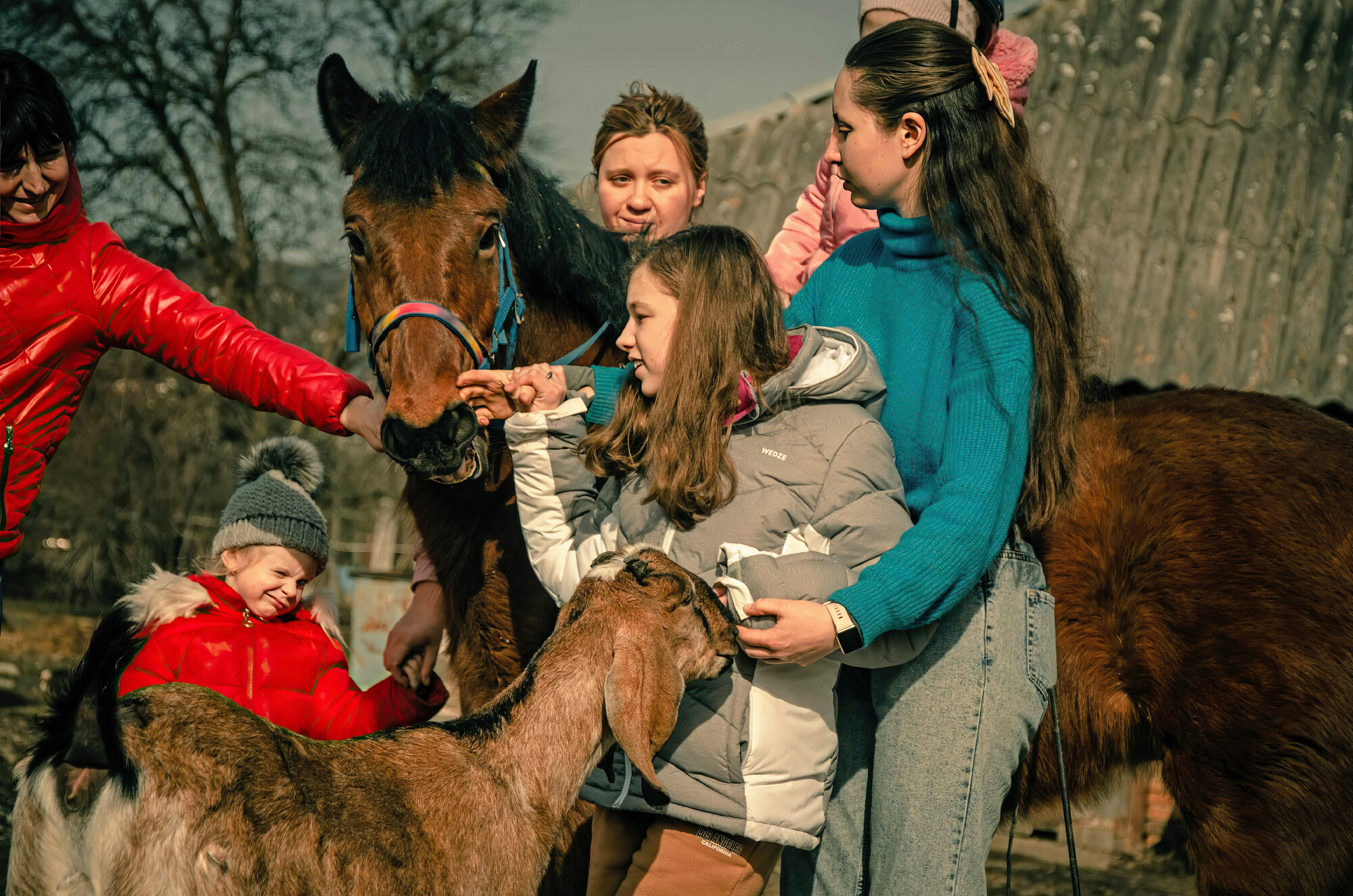
Editor’s note: Only first names of Ukrainians are used for their security. All photos are courtesy of MCC partners. Please note that content in this story may be disturbing to some readers.
A missile fell as Matviy, 10, and his younger sister, Zlata, 6, were walking near their apartment building in Zaporizhzhia, Ukraine, last August. Although it landed in another part of the city, they were frightened and ran home to meet their mother, who was already on her way to them.
After hugging her children, Daryna encouraged them to breathe in with their noses and release their breath slowly through their mouths. This was one calming skill that she learned at weekly group therapy at New Hope Center.
MCC supports New Hope in Zaporizhzhia and other partners who are addressing the emotional needs of children and adults traumatized by the Russian military’s invasion of Ukraine in 2022. These partners also provide food and water, hygiene supplies and shelter.
Daryna’s children attend group therapy, too. Child psychologist Katerina leads them in play, art therapy and discussions about emotions.

“There is no child who is not involved in all of this fear,” Katerina says. “So, it’s unfortunate. I don’t know if there are any fully healthy children anymore.” She tells the children that there are no “bad” emotions — that fear and anger are normal responses — but that they can control how they respond to these feelings.
“What I feel is grief,” Matviy says. When his family left their home in the village of Molochansk, where the Russian military was taking control, his grandparents stayed behind. Matviy also left his friends and his school.
Online classes and weekly sessions at New Hope allow him to interact with children his age. And he has discovered the healing powers of fresh air and regular phone calls to his grandparents. “I need just to change the bad energy to a good one,” he says.
Trauma that children experience from the war compounds any problems children had before the war, Katerina says. Whether the child was dealing with significant mental health issues or common childhood anxieties, the emotional weight of the war tends to make the original problem worse.
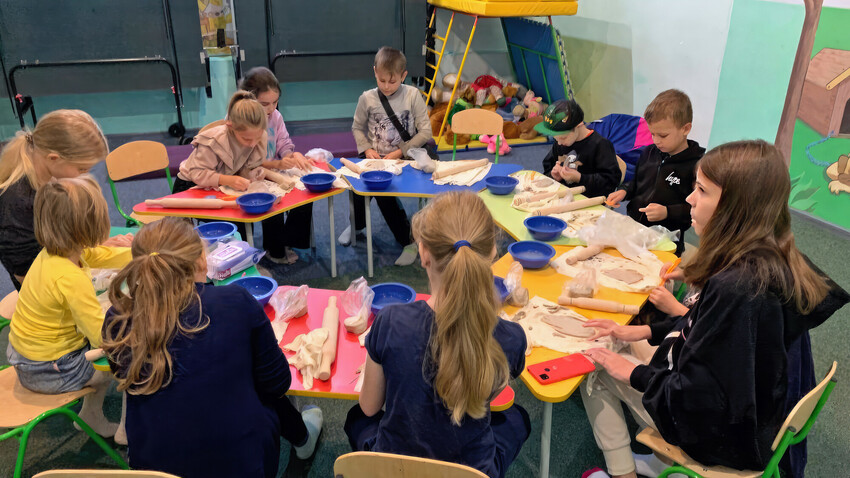
The sessions provide a place where children can feel safe emotionally, Katerina says. “They feel accepted. Nobody will hurt them. Nobody will judge them. And in terms of the war, it helps them to be creating . . . maybe get distracted from their thoughts and get some positive emotions. It calms them down a little bit.”
Iryna, a psychologist at MCC partner Nevo, a charitable organization in Zaporizhzhia, says that if children receive psychological assistance early, they are less likely to experience deep psychological trauma and post-traumatic stress disorder. As children’s trauma is addressed, they are more likely to adapt and to keep learning.
The children see military personnel and equipment in the city, which is close to the contact line. They hear rockets and see buildings that were destroyed. Sometimes they need to move from one area of the city to another, and they get upset because they can’t sleep in their own houses, Iryna says.
But art therapy helps them to relax and distracts them from all the destruction, Iryna says. Working with clay is an effective medium for children to express what they feel and find hope.
One child, Ulya, 9, who had to leave her home because of the invasion, used the clay to make a cat. “We had to leave the cat at home. I miss him a lot, but we couldn’t take him with us,” she told her instructor.
By the end of class, students are eager to show their parents what they have made, Iryna says. “When they do something out of clay, they are joyful.”
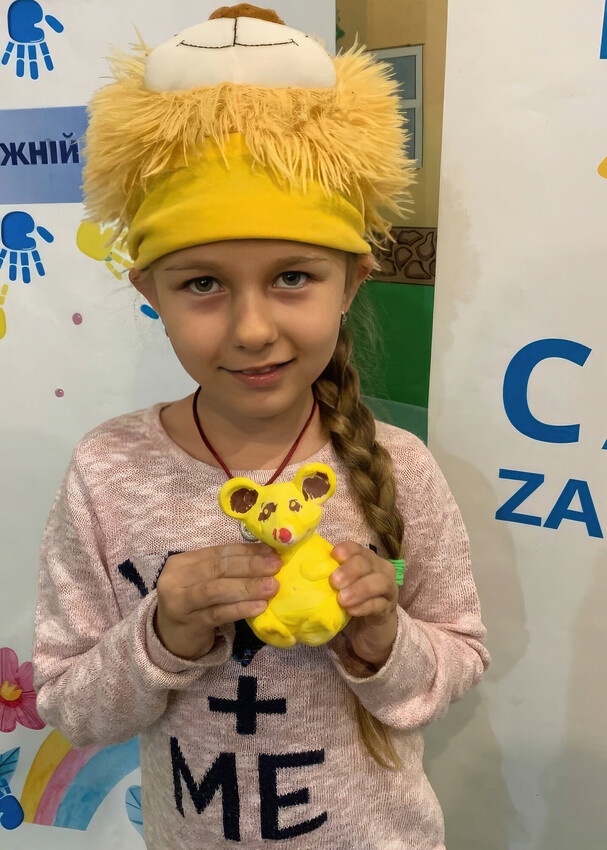
Clay also can absorb anger that children carry. “The worst day of my life, when my father went to war, I came home and saw that my mother was crying,” said Alina, 7, during art therapy. “When I found out that Dad was going to fight, I screamed and cried a lot.”
Iryna allows the children to release their anger on the clay by beating it or throwing it. “When they have a piece of clay in their hands, they sort of get rid of their aggression through their hands, and it also returns some sort of control. ‘I can do something. The war destroyed everything, but I can create something.’”
Unexpressed anger, Iryna says, can literally make children sick or cause them to lash out at others. “Also, the muscles of a child are very tense. He or she is like stone.”
That’s one reason why the therapeutic horseback riding and massage project supported by Association of Mennonite Brethren Churches of Ukraine in the western part of the country is helpful for children who have been traumatized. Children can attend two weeks of therapy free of charge.
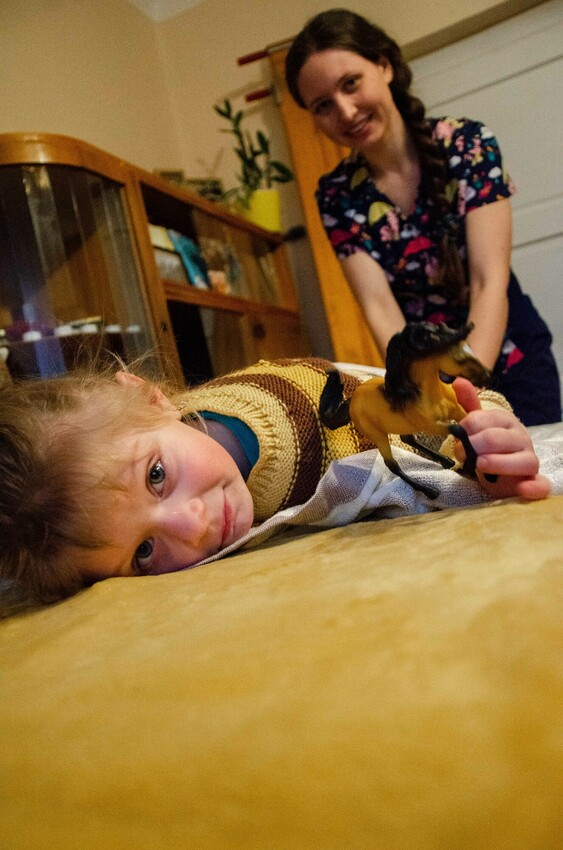
Riding on a horse can help children’s muscles relax and stretch, and their balance can improve, says Margaryta, who started and leads the project. She has degrees in physical rehabilitation and ergotherapy, which is similar to occupational therapy.
These benefits are important for children who have physical disabilities and for Milana, 4, who was so traumatized she did not want to walk. She and her mother had stayed in the basement of an apartment building for three weeks to avoid being killed by the shelling.
Rescuers eventually directed them to a bus where corpses lay on the floor and wounded people traveled with them. Milana and her mother reached family, but Milana did not talk or smile for three months. She didn’t sleep well and was irritable and aggressive.
Quote
"Confidence, concentration and calm almost immediately sank into the heart of our child."
As Milana participated in the therapeutic riding and massage program, she began to feel relief. She smiled after Margaryta finished massaging her legs.
“Her mother has to carry her less in her arms. She began to sleep better at night and show less aggression,” Margaryta says. Milana even began to have thoughts about how to help other people.
Margaryta says it’s rewarding to see children improve and their parents’ emotional loads become a bit lighter.
Krystyna, the mother of Vanya, 6, says she could barely control her emotions when she saw her son’s excitement as the horse began to trot. The bombings that shook the windows of their house, the loss of their pet parrot and the stresses of their life in a new town took a back seat.
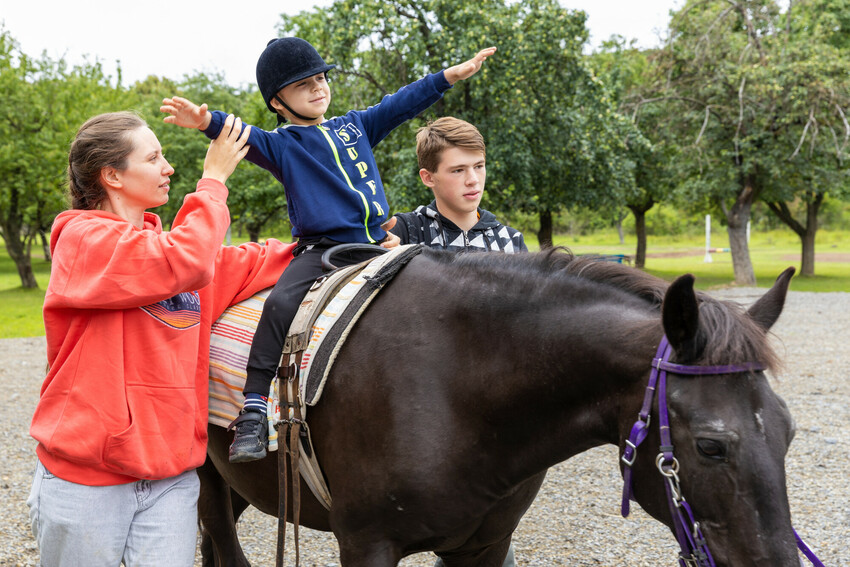
“The smile does not leave the face,” Krystyna wrote in an evaluation. “Every day began to bring new discoveries and sensations. Confidence, concentration and calm almost immediately sank into the heart of our child. He wanted so much that these classes would not end.”
Margaryta gives parents exercises that they can continue with their children after the two weeks are over. She also encourages parents to look for nice places where they can go or activities they can do with their children to help them deal with their experiences.
It’s not just children who need help processing what they’ve experienced.

Back in Zaporizhzhia, Daryna is grateful to New Hope not only for the group therapy that has benefited her son and daughter, but also for the sessions she’s attended.
For her, leaving her home in occupied territory and moving to a new city was extremely difficult. It took time to readjust. She credits New Hope with helping her become a better parent as she navigated a completely new life.
Quote
"If you always live in fear, it’s not a life."
“Group therapy helped me to become less irritated,” she says. “In general, everything around you doesn’t change, the situation is still the same, but I try to switch the focus of my attention on children and on my education.
“If you always live in fear, it’s not a life.”
Header photo caption: Riding therapy with Margaryta (in turtleneck sweater) helps children become more resilient to war-related stress and decrease related muscle stiffness.
Give where needed most
Every donation makes a difference.

